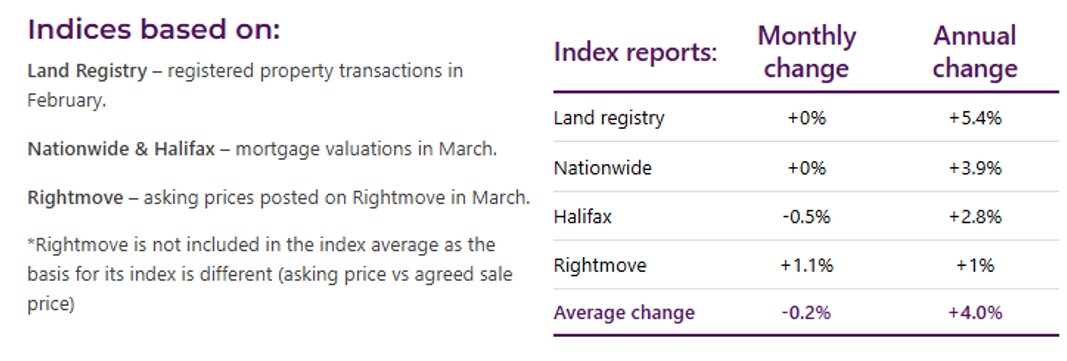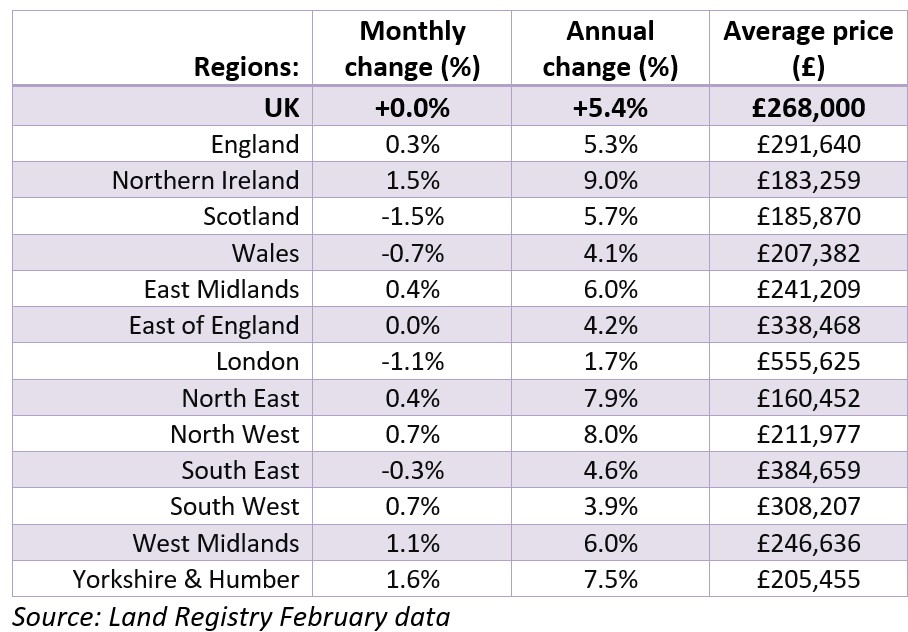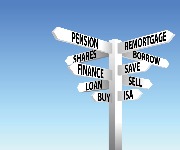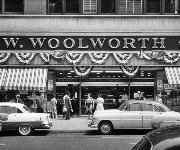UK house price latest 2025: what's happening to property values near you

The average house price jumped 4% over the last year, but the market will likely be more subdued in the months ahead. See what's happening to values near you.
Feeling a bit lost with so many house price reports out there?
The HomeOwners Alliance House Price Watch looks at all the information from the various property indices to give you one easy-to-digest round-up of everything you need to know.
So, let's look at how prices have changed over the past month and year.
What’s going on with house prices?
When you average out the latest figures reported by all the major indices, prices dipped 0.2% in the last month (see table below).
Looking over the longer term, which generally provides a more reliable snapshot of the housing market's performance, prices increased by 4% over the last 12 months.
This means the average home is now worth £268,000, according to the Land Registry – which has the most comprehensive set of property data.
Those who follow UK house price trends closely might have noticed that figure is far lower than usual: Land Registry data had estimated typical home values were around £290,000 in recent months.
There hasn't been a sudden crash in values, but rather, the organisation has changed the way it assesses prices, so this will now be the new base for official house price data.
What will happen to house prices for the rest of 2025?
While the housing market has started the year strongly with prices rising and demand from buyers up year-on-year, the end of the Stamp Duty holiday this month is likely to subdue the market.
However, Nationwide believes the impact will be short-lived.
“The market is likely to remain a little soft in the coming months since activity will have been brought forward to avoid the additional tax obligations – a pattern typically observed in the wake of the end of Stamp Duty holidays.
“Nevertheless, activity is likely to pick up steadily as the summer progresses, despite wider economic uncertainties in the global economy, since underlying conditions for potential home buyers in the UK remain supportive.”

7 reasons why no one is buying your house
What's happening to house prices near me?
Land Registry has the most comprehensive data regarding housing stock, and it provides a handy regional breakdown of house prices across the UK.
This data takes slightly longer to compile, so isn't quite as up-to-date as the other property indices – its latest prices cover up to February 2025 – but it nonetheless provides an interesting insight into how areas are faring relative to each other.
In the 12 months up to that point, prices increased in every region.
The housing market in Northern Ireland has proved the most buoyant over that period, with prices jumping 9%, followed closely by the North West (8%) and North East (7.9%) of England (9%).
See the table below for a full breakdown of prices by region.

What the indices say
HomeOwners Alliance
“Most indices report a strong start to market activity in 2025 with agreed sales 5-9% higher than a year ago.
“With the Stamp Duty deadline, there was a surge of transactions in February, up 13% on January. House price growth has been held in check with the number of homes for sale at a 10-year high.
“Buyer demand is falling - possibly in response to a slower economic outlook and higher Stamp Duty costs from April.
“FTBs in London look to be most affected by higher Stamp Duty from April.
“Overall market activity and house price growth beyond April are expected to be restrained until mortgage rates begin to fall further.”
Rightmove
“The average price of property coming to the market for sale rises by 1.1% (+£3,876) this month to £371,870, which is in line with the long-term March average increase.
“It shows that many new sellers are pricing sensibly. While new spring buyers will not beat this month’s Stamp Duty deadline, they will benefit from the highest property choice at this time of year since 2015.
“Despite ongoing global uncertainty, the property market remains resilient, with positive signs of growth heading into spring.
“The number of sales being agreed is 9% higher than at this time in 2024, a positive sign for the market post-Stamp Duty increase, and the number of new sellers is now 8% ahead of this time last year.
“Mortgage rates remain only fractionally lower than at this time last year as buyer affordability remains stretched. It would be a potential boost to buyer affordability if the Bank of England moves to reduce the Bank Rate more quickly starting in May.”
Nationwide
“UK house price growth remained stable in March at 3.9%, the same as in February. There was no change in prices month-on-month, after taking account of seasonal effects.
“These price trends are unsurprising, given the end of the Stamp Duty holiday at the end of March.
“Indeed, the market is likely to remain a little soft in the coming months since activity will have been brought forward to avoid the additional tax obligations – a pattern typically observed in the wake of the end of Stamp Duty holidays.
“Nevertheless, activity is likely to pick up steadily as the summer progresses, despite wider economic uncertainties in the global economy, since underlying conditions for potential home buyers in the UK remain supportive.”
Halifax
"House prices rose in January as buyers rushed to beat the March Stamp Duty deadline. However, with those deals now completing, demand is returning to normal and new applications slowing.
“Our customers completed more house sales in March than in January and February combined, including the busiest single day on record.
“Following this burst of activity, house prices, which remain near record highs, unsurprisingly fell back last month.
“Looking ahead, potential buyers still face challenges from the new normal of higher borrowing costs.
“However, with further Base Rate cuts anticipated alongside positive wage growth, mortgage affordability should continue to improve gradually, and therefore we still expect a modest rise in house prices this year."
|
PROMOTION
|
||
|
Zoopla
“House price inflation slows to 1.8% as the supply of homes for sale outpaces the growth in sales agreed.
“Sales agreed continue to rise, up 5% year-on-year. We expect the growth in sales agreed to continue rising at a steady pace over 2025 as more sellers, most of whom are also buyers, enter the market in the coming months.
“But we expect the rate of UK house price inflation to moderate as rising supply (homes for sale is 11% higher than this time last year), higher Stamp Duty costs and static mortgage rates will temper the rate of price inflation.
“London is one area where buyer demand is lower (-3%) than a year ago. 8 in 10 FTBs in London will pay Stamp Duty from April compared to less than half under the previous thresholds.
“FTB demand is down across all price bands in London.”
RICS
"The March 2025 RICS UK Residential Survey results signal a further deterioration in sales market conditions, with both domestic and global macroeconomic concerns seemingly starting to weigh more heavily on sentiment.
“In keeping with this, respondents have turned increasingly cautious on the near-term sales outlook, even if twelve-month expectations are still mildly positive for now.”
Most Recent
Comments
Be the first to comment
Do you want to comment on this article? You need to be signed in for this feature









